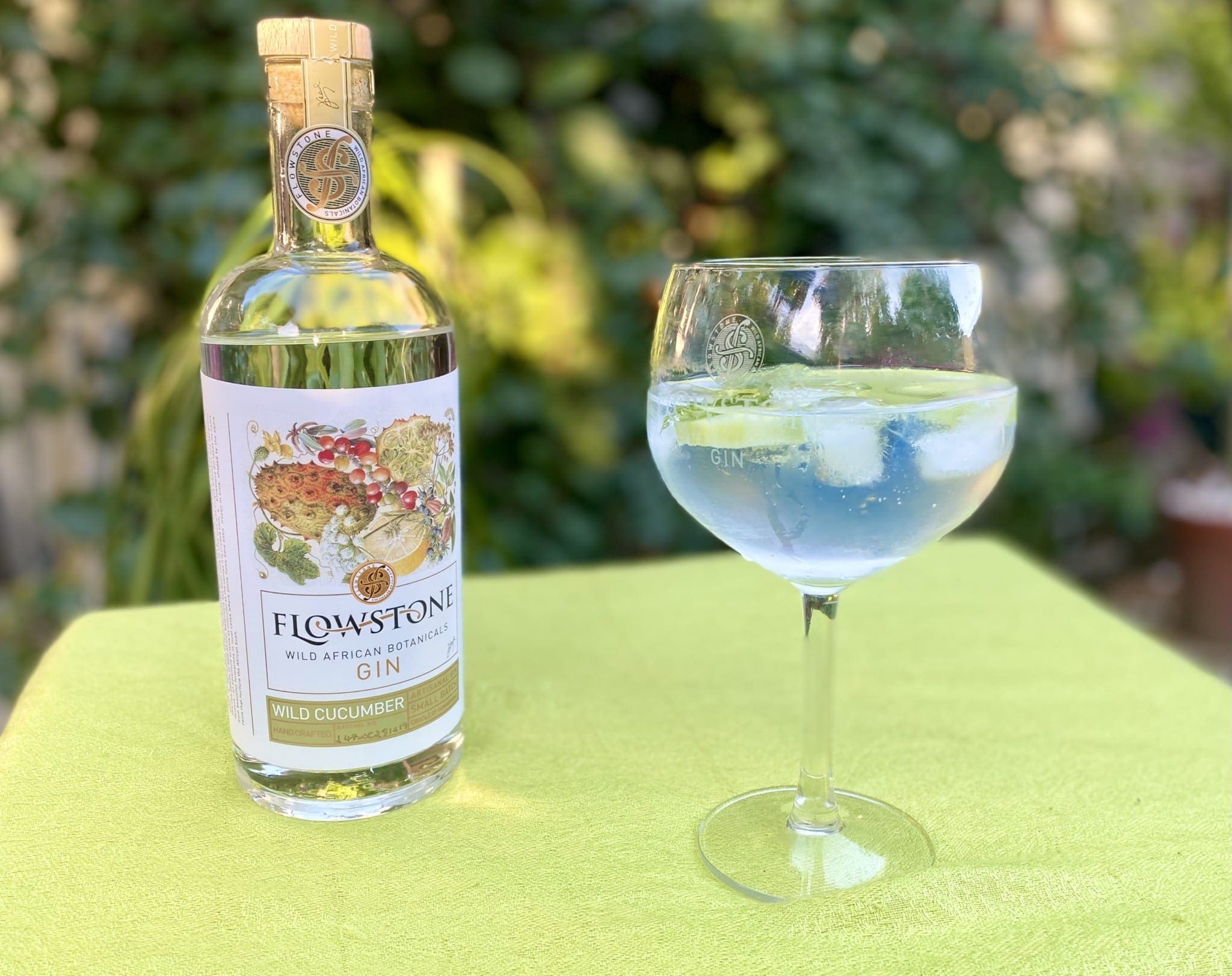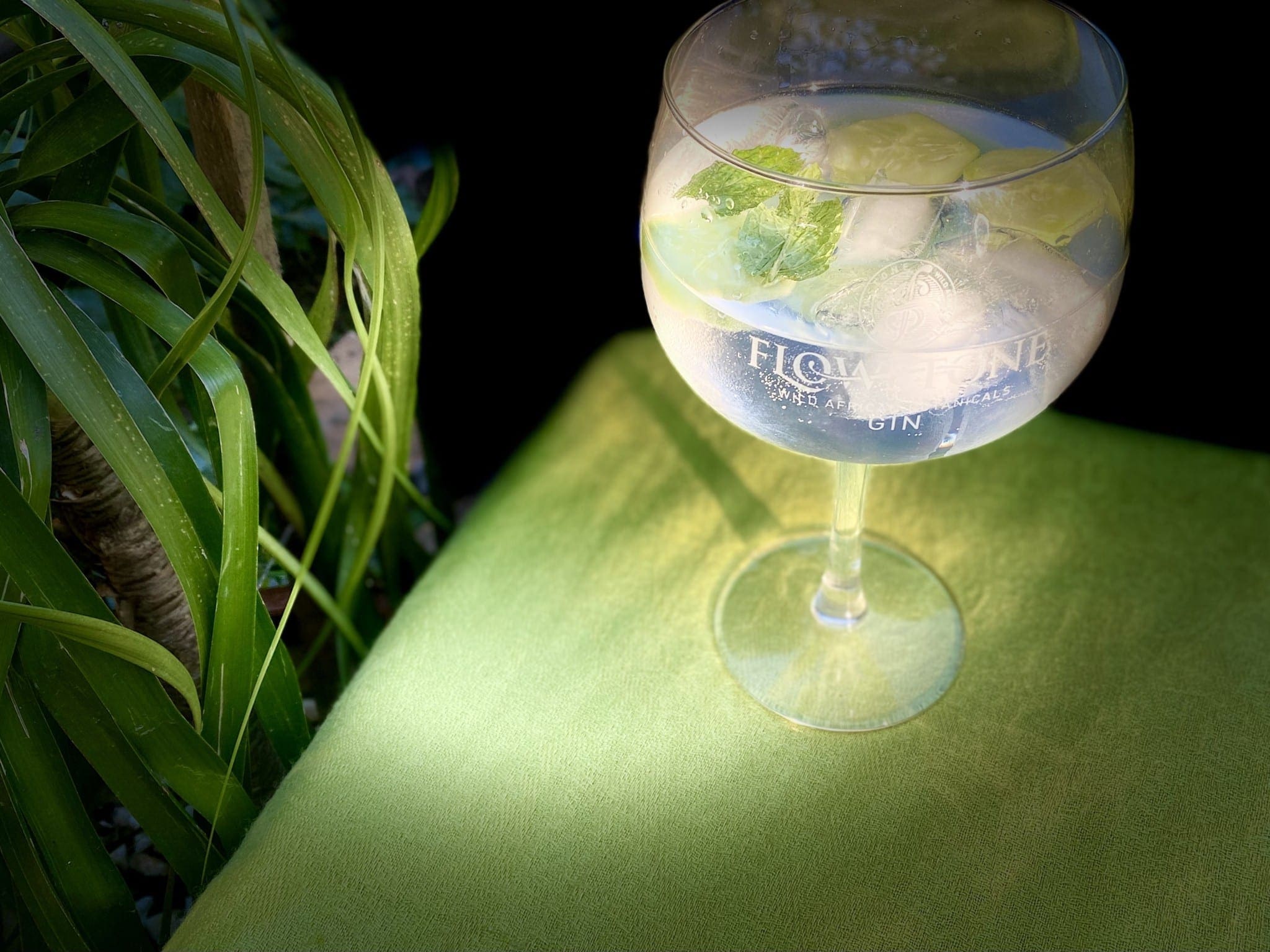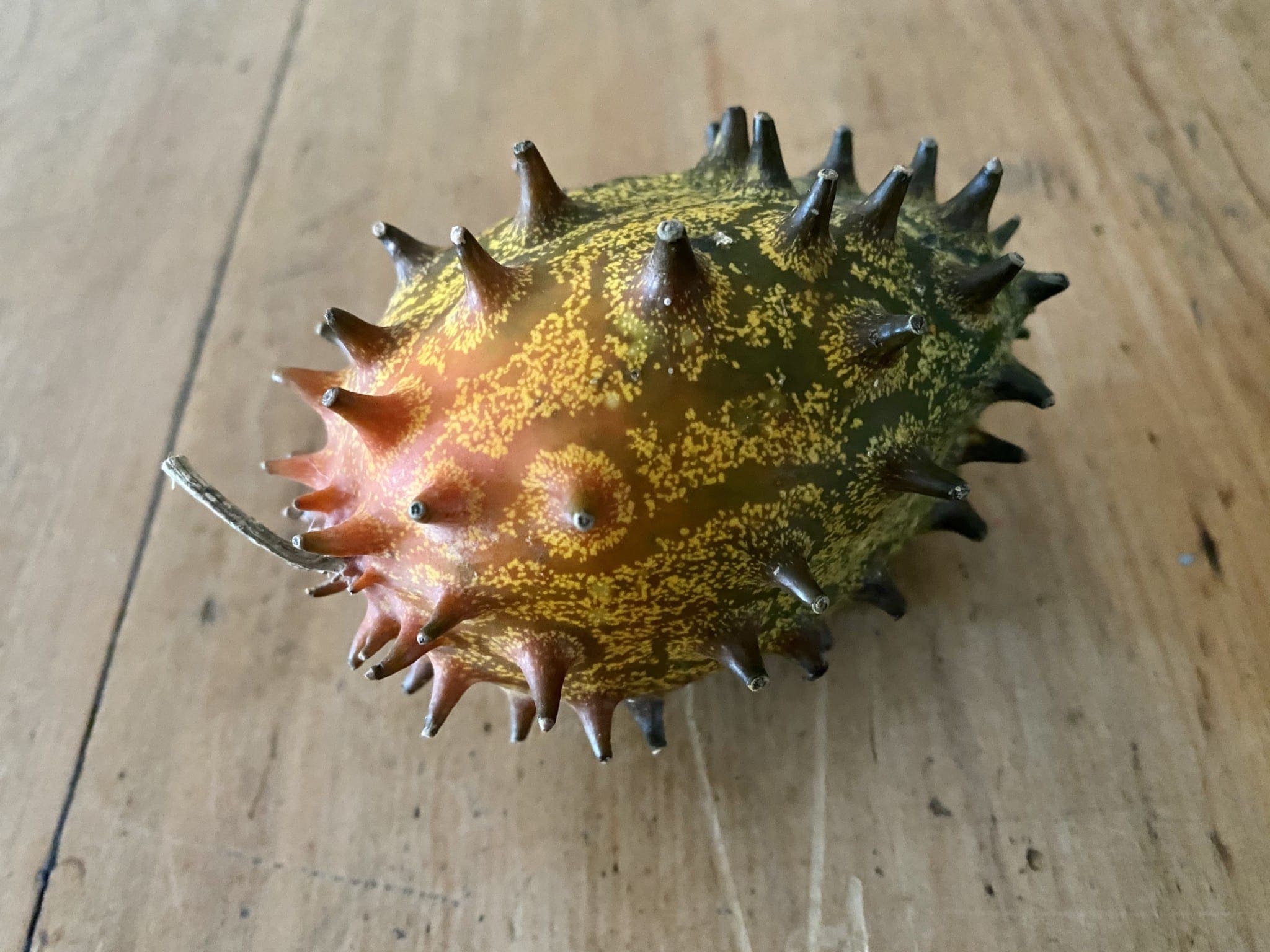ALONG with the delivery of a bottle of Flowstone gin came a wild cucumber. Now, I know I’m supposed to be more interested in the gin and its gorgeous packaging – and I am interested, I swear – but that prickly little fruit has fascinated me.
It’s a beautifully shaded, from green to orange, sort of egg-shaped thing, covered in horns, with a tiny stalk which looks like a tail on some weird alien creature. it got me to musing how we’ve discovered foods that can be eaten, either as they are or manipulated in some way (coffee, chocolate), when everything Nature has endowed them with screams “hell no! stay away from me!”.
The durian fruit springs to mind. Not only is it its appearance unfriendly, it reeks; so much so it’s often banned from public transport in countries where it’s available. And I’m sorry to say, it tastes awful too – exactly like what the smell would have you expect. Wikipedia cheerfully describes the odour as “pig-excrement, turpentine and onions, garnished with a gym sock.” Another website says: “The texture of durian is smooth, silky, and melts in your mouth like toasted marshmallow.” Which is another way of saying “slimy”. You can probably guess I’m not a fan, and have better things to do than acquire this particular taste.
Such opposing points of view serve as an example of not to believe everything you read on the internet. When Googling “wild cucumber”, make sure you have the correct one: Cucumis anguria, indigenous only to Africa, and used for pickling or eaten raw or cooked. Marah macrocarpus, on the other hand, which is native to Southern California and also called wild cucumber, is bitter at best, toxic at worst (depending on where you look). The Kumeyaay people would throw it at fish to stun them, then pick them out the water.
 What a rabbit hole on account of the fruit which I still cannot bring myself to slice open. I’m thinking of naming it Kevin, and I’ve been keeping him on my desk. Our wild cucumber, which is edible, became the headline ingredient in one of Flowstone’s gins, which hail from the Cradle of Mankind, just 50km northwest of Joburg. Owner Glyn French tells the story (the gin she refers to is Hendrick’s):
What a rabbit hole on account of the fruit which I still cannot bring myself to slice open. I’m thinking of naming it Kevin, and I’ve been keeping him on my desk. Our wild cucumber, which is edible, became the headline ingredient in one of Flowstone’s gins, which hail from the Cradle of Mankind, just 50km northwest of Joburg. Owner Glyn French tells the story (the gin she refers to is Hendrick’s):
“It was a beautiful highveld winter’s afternoon and we set about making some seriously well-deserved G&Ts, but we needed cucumber to garnish and there were none in the house,” she recalls. With no shops in the area, Glyn decided the beautiful and spiky wild cucumbers that were just coming into season in the garden would have to do. “The resulting G&Ts not only looked stunning but tasted amazing, and someone made one of those throwaway comments that ‘someone should make a gin out of this’.”
I made mine with cucumber tonic, added a few sprigs of mint, and some normal tame, domesticated cucumber. It was lovely and refreshing, as a cool green-infused drink should be. It went down a treat. If you consider the texture and colour of the flesh of a cucumber, you will be reminded of green melon and kiwi fruit, so close your eyes and imagine that too.
 In addition to the Wild Cucumber gin, Flowstone produces three others, all using ingredients from the region: bush willow, marula and snuff-box; this last is named for its fruit which would be hollowed out and used for storing snuff. It’s also known as a fried egg tree. Isn’t the internet marvellous? The snuff box gin is a special one, released in individually numbered batches of 1 000 bottles at the start of each summer as the fruit matures.
In addition to the Wild Cucumber gin, Flowstone produces three others, all using ingredients from the region: bush willow, marula and snuff-box; this last is named for its fruit which would be hollowed out and used for storing snuff. It’s also known as a fried egg tree. Isn’t the internet marvellous? The snuff box gin is a special one, released in individually numbered batches of 1 000 bottles at the start of each summer as the fruit matures.
And in case you’re wondering, those stunning labels are not just a bunch of pretty flowers (although they are); they were designed by ward-winning botanical artist Jenny Hyde-Johnson. Her body of work has been exhibited locally and abroad and is on display at The Royal Botanical, Kew Gardens in the United Kingdom.
“I combined the relevant blooms, berries, and fruits pertinent to each flavour in the centre of the label, and then filled the lesser areas of the painting with the typical ingredients unique to all gins. These ingredients include angelica, citrus (lemon, orange) cardamom pods, star anise etc,” she says.

It’s going to be a warm late autumn week in Cape Town, so make the most of the gin-drinking weather. Best enjoyed outdoors.
WILD CUCUMBER JULEP
Ingredients
- 50ml Flowstone Wild Cucumber gin
- 20ml fresh lime juice
- 15ml simple syrup
- 2 to 4 mint leaves
Method
Drop your Flowstone Wild Cucumber Gin, fresh lime juice, simple syrup and mint leaves into your shaker then get your arms moving.
After mixing thoroughly, fine-strain it into a chilled gin-goblet, before adding three mint leaves and ice.
Muddle the mint just before serving.
For more information (and to see all the awards this gin has won), click here.
PHOTO CREDIT: Bianca Coleman ©
